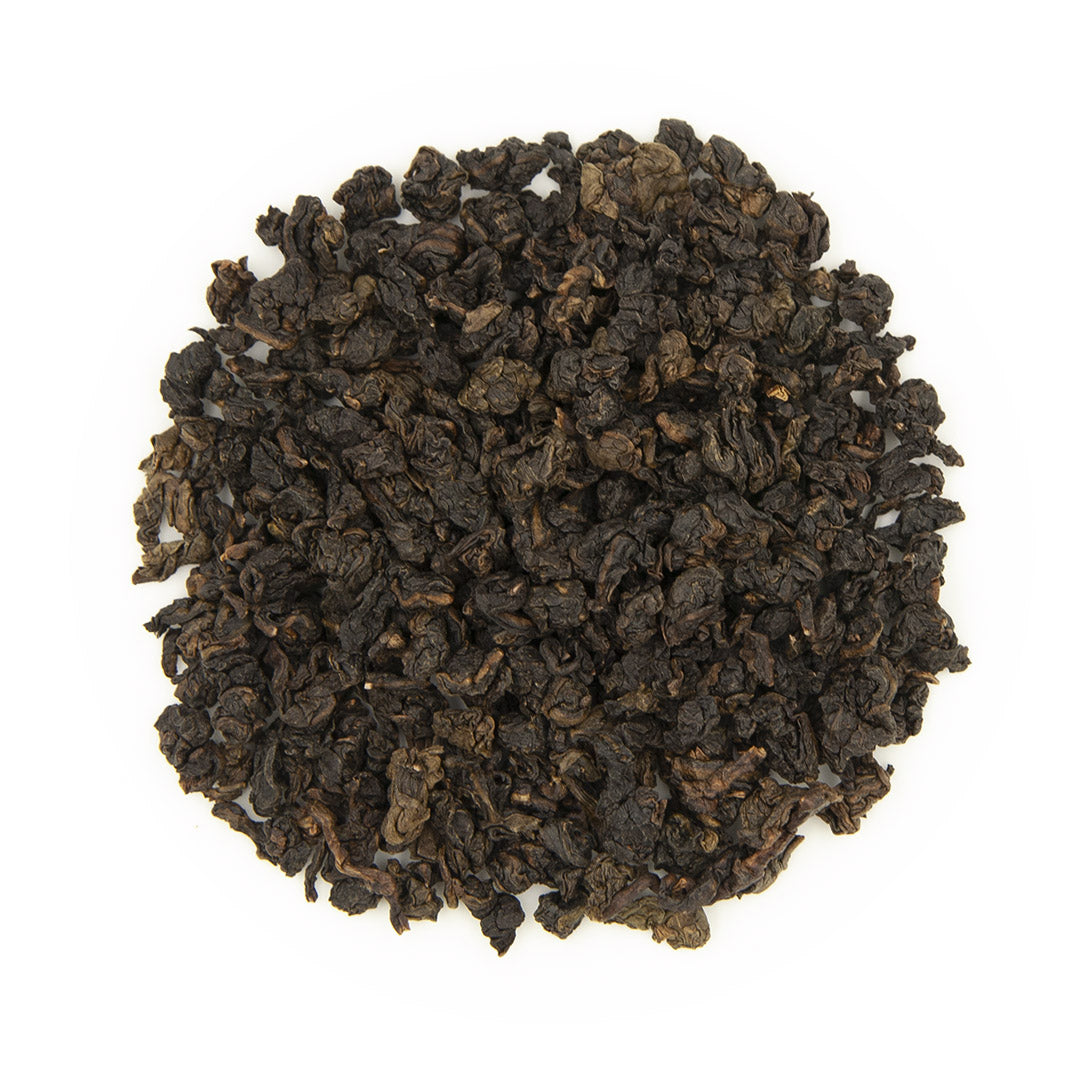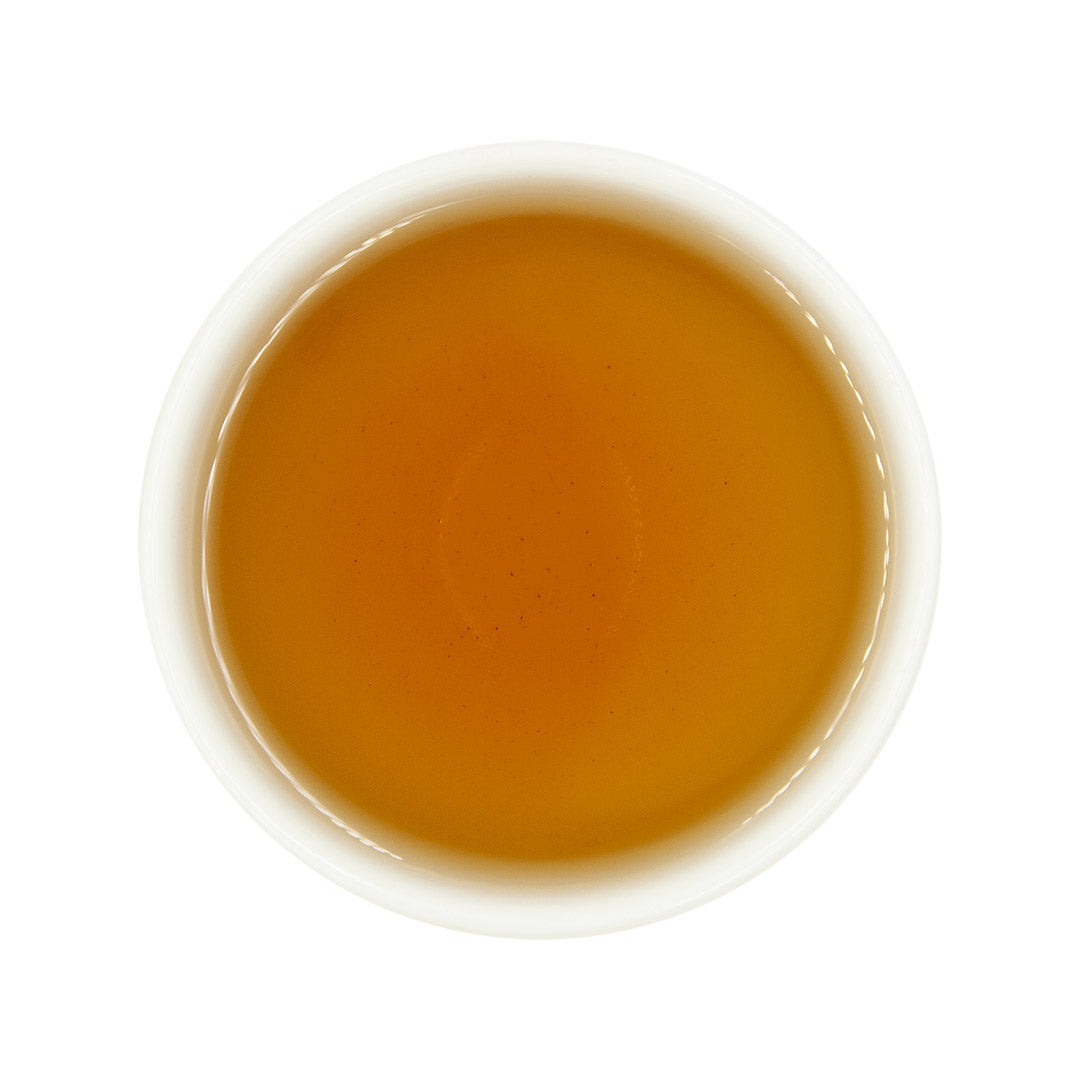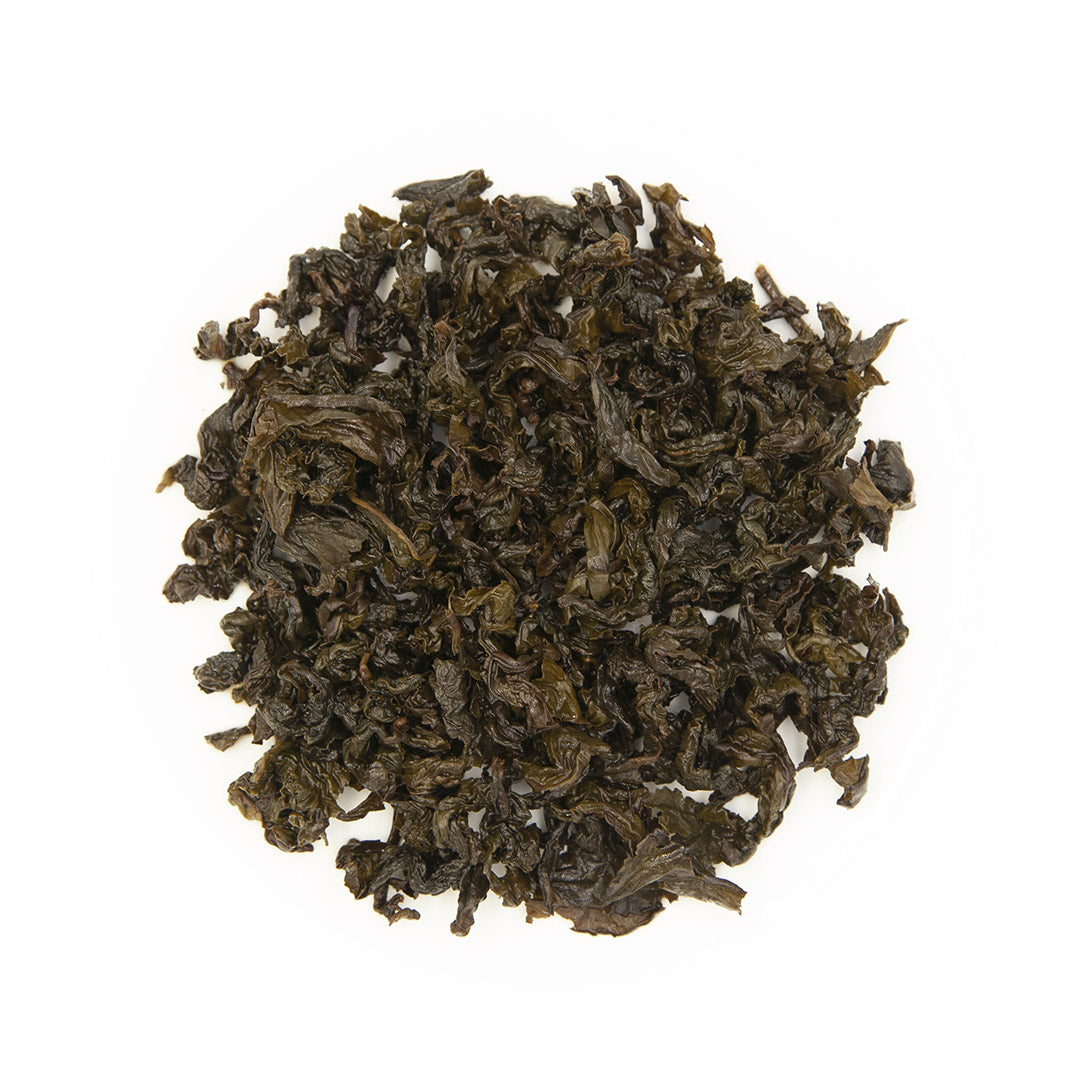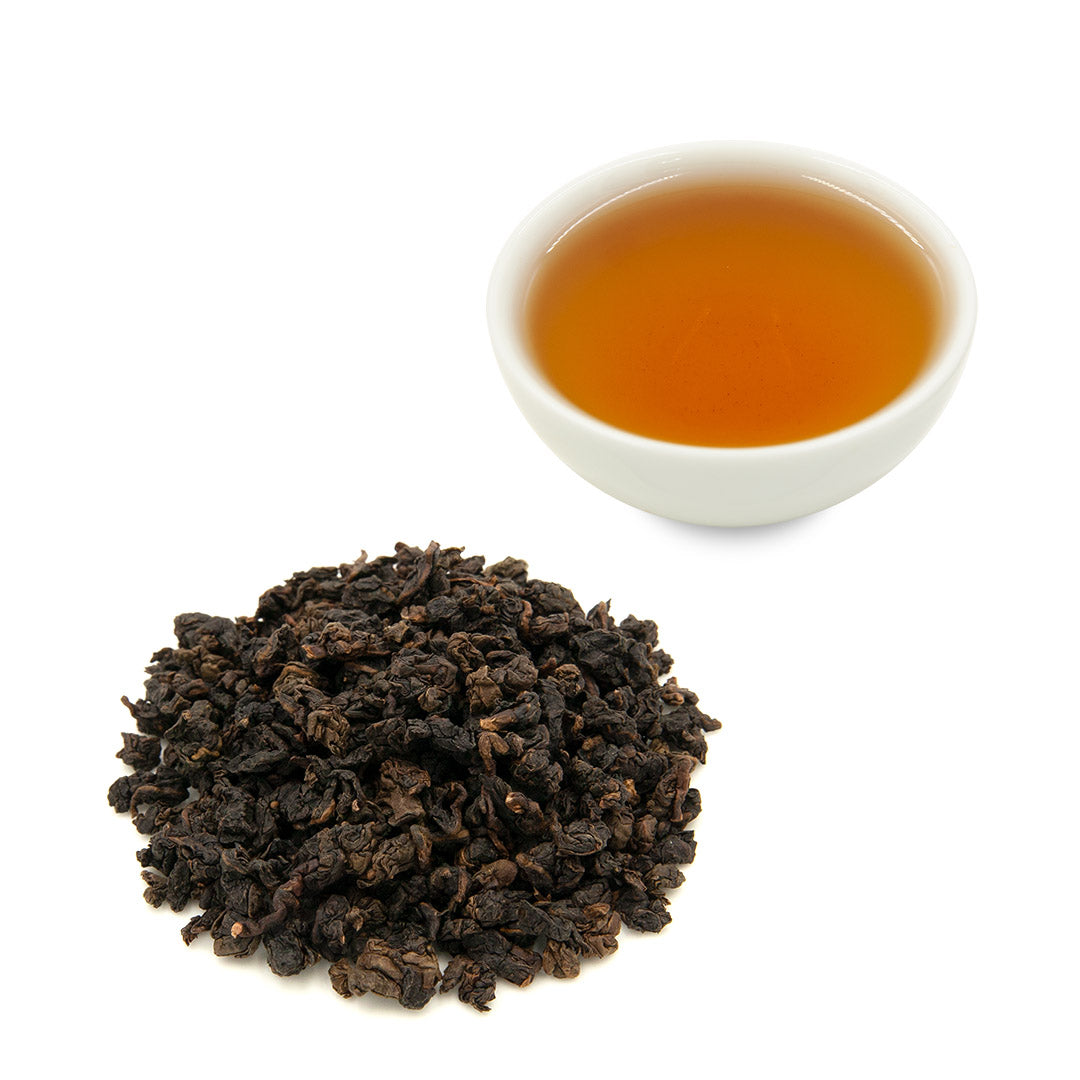Tie Guan Yin Oolong Tea
US$25
Please select all options.
-
Flavor: Fruitwood smoke, pipe tobacco aroma. Roasted, tangy fruit profile. Notes of rhubarb and dried apricots. Lasting dry finish with hints of mineral and stone fruit.
Garden: This mixed batch of tea comes from Muzha and Pinglin, in Taipei. The Tie Guan Yin tea leaves were harvested from this farmer's organically grown plots of tea in Muzha. Both of these place names have been producing tea since the 1800's.
This farmer manages his own small plots of Tie Guan Yin, also known as "Iron Goddess", tea plants and processes the leaves in his home factory. This batch is 1/2 hand-picked Tie Guan Yin tea leaves and 1/2 machine clipped Jin Xuan Oolong that he processed in the traditional Tie Guan Yin fashion. It is now common practice to make Tie Guan Yin Oolong with Jin Xuan tea leaves. The majority of entries in the Muzha Farmers' Association Tie Guan Yin Oolong Tea Competition are made with leaves harvested from Jin Xuan tea plants and processed as Tie Guan Yin. Our source has found that blending these two tea strains offers a well balanced flavor profile with the original Tie Guan Yin character, while maximizing his minimal yield.
Harvest: Hand-picked and machine clipped, small batch. Winter 2024. Muzha/Pinglin, Taiwan.
Elevation: 300m/600m
-
Tie Guan Yin Oolong Tea as it is made in Muzha, Taipei, is traditionally a heavily oxidized, heavily roasted tea, that in effect puts it in its own flavor profile. It is distinctly different from all other tea types produced in Taiwan, regardless of region or tea strain. This tea is unique due to its curing methods.
One step in particular sets Tie Guan Yin apart from the processing methods of other Oolong types. After the "kill green" or "cease oxidation" step —where the leaves are exposed to high heat, they are partially rolled and dried, and then put in the roasting oven while still in cloth-wrapped balls, and slightly "steamed in their own juices". This results in a subtle, tangy fermented character that makes Tie Guan Yin unique. This anomaly of tea processing methods in Taiwan, combined with heavy oxidation and heavy roasting give Tie Guan Yin Oolong is bold, rich and distinguished character.
-
Traditional methods of tea making typically involve much more "curing" of the tea leaves — which has the dual purpose of bringing out a distinct character, and stabilizing the tea leaves to maintain flavor — giving it a prolonged shelf life as well as a distinguished profile. In this sense, Tie Guan Yin Oolong is a prime example of a traditional product of regional origin. This tea tree strain was initially brought from mainland China, and took root in Northern Taiwan. It's traditional processing methods have continued to evolve to this day.
These tea leaves were cultivated and cured in perhaps the most traditional fashion that has survived into Taiwan's 21st-century tea industry. Not only were they cultivated in the most historical tea-growing regions in northern Taiwan, they were cultivated and cured in an overall context that is now very rare. It is rare because it is one of the few remaining resources of heirloom Tie Guan Yin tea trees in Taiwan, and it is naturally cultivated, and it is processed in the most boutique home-style tea factory we've ever seen.
Tie Guan Yin Oolong tea is traditionally a heavily oxidized, heavily roasted tea, that in effect puts it in its own flavor profile. It is distinctly different from all other tea types produced in Taiwan, regardless of region or tea strain. This tea is unique due to its curing methods.
One step in particular sets Tie Guan Yin apart from the processing methods of other Oolong types. After the "kill green" or "cease oxidation" step —where the leaves are exposed to high heat, they are partially rolled and dried, and then put in the roasting oven while still in the cloth-wrapped balls shown above, and slightly "steamed in their own juices". This results in a subtle, tangy fermented character that makes Tie Guan Yin unique. This anomaly of tea processing methods in Taiwan, combined with heavy oxidation and heavy roasting give Tie Guan Yin Oolong its bold, rich and distinguished character.
-
Mug: 8g tea in 350ml 95°C water. Steep for 3 minutes. Re-steep. Adjust to taste.
Cold Brew: Use 5g of tea per liter of water. Brew tea at room temperature for 2-3 hours, and enjoy. Or you can put your cold brew bottle in the fridge to brew overnight and be ready to drink the next day.
Gongfu Brew: Start with a 1:14 ratio of tea leaves to water (e.g.: 10g/140mL) . Use boiling temperature water and brew for about 60 seconds. Increase brewing time with each successive brew. The leaves can be brewed 5-6 times.
I like it very much. It reminds me of light roasted Tie Guan Yin. But price….
I enjoyed this tea very much. It was refined and yet had some body to it. It had a refreshing taste.
Excellent tea, one of my all time favorites. with a deep smoky flavor.
Great quality and very tasty. Would buy again.
I'm so glad eco-cha is offering Tie Guan Yin because I love the legendary tea. The batch tastes even more flavorful than the ones I've had in Taiwan. I highly recommend the tea and have been gifting this to family and friends myself.






